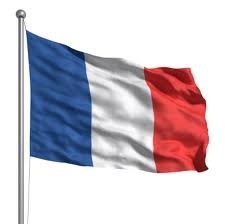

A marée basse sur la plage, apparaissent puis disparaissent au gré des tempêtes d’hiver des bancs de tourbe, sol hydromorphe organique, qui renferment notamment des troncs et des souches d’arbres, témoins d’une ancienne forêt engloutie par la mer.
Cette forêt appelée La forêt de Quintefeuille, qui s’étendait d’Arromanches-les-Bains à Luc-sur-Mer, s’est développée il y a 12000 ans, puis a été submergée il y a 7000 ans.
La tourbe, matière combustible, spongieuse et légère, résulte de la décomposition de végétaux à l'abri de l'air. Elle fut exploitée jusqu'au début du XXe siècle par les habitants les plus pauvres. Aujourd'hui, tout prélèvement est interdit.
Les tourbes, sables et argiles de la plage d'Asnelles, ont fait l'objet de nombreuses études depuis le milieu du XIXe siècle. Y ont été trouvés des restes de bois végétal (de chênes, d'aulnes, de pins ou de bouleaux, de noisetiers et leurs noisettes, des noyaux de cerises,...) de nombreux restes d'animaux sauvages et domestiques (cheval, boeuf, cerf, sanglier, loup, renard, mouton, chèvre, chien, chat,...) des coquilles de mollusques, de gastéropodes, de bivalves, ainsi que des vestiges d'occupation humaine (ossements, habitats, outils,...) depuis les silex du Néolithique jusqu'à des céramiques de la période gallo-romaine. Deux espèces fossiles de mammouths ont été reconnues dans la tourbe ancienne d'Asnelles. De même, la découverte de fossiles de rhinocéros laineux, de cerfs gigantesques, d'aurochs atteste la présence de ces mammifères dans ces tourbes.
Intérêt géologique principal : Stratigraphie Succession de formations depuis le Pléistocène supérieur jusqu'à l'Holocène.
Intérêt(s) géologique(s) secondaire(s) : Géomorphologie Complexe falaise morte - marais littoral - dune, visible dans le paysage.
Paléontologie : Dépôts holocènes riches en fossiles avec de nombreux pollens, des restes de bois (troncs et branches), des ossements de vertébrés dont un squelette quasi-complet de cheval et des mollusques d'eau douce.
Sédimentologie : Passage de dépôts marins à des dépôts continentaux de marais littoral.
Intérêt(s) pédagogique(s) Pour tous publics : Forêt fossile et légende de la "forêt de Quintefeuille", formation d'une tourbière holocène, évolution des milieux littoraux contrôlée par les cycles climatiques quaternaires, richesse en fossiles végétaux et animaux holocènes.

At low tide on the beach, bogs of peat, an organic hydromorphic soil, appear and then disappear with the storms of winter, which contain trunks and tree stumps, witnesses of an ancient forest engulfed by the sea.
This forest called La forêt de Quintefeuille, which stretched from Arromanches-les-Bains to Luc-sur-Mer, grew 12,000 years ago and was submerged 7,000 years ago.
Peat, a combustible, spongy and light material, results from the decomposition of plants in the shelter of the air. It was exploited until the beginning of the 20th century by the poorest inhabitants. Today, any levy is prohibited.
The peat, sand and clay of Asnelles beach have been the subject of numerous studies since the middle of the XIXth century. Remains of vegetable wood (oak, alder, pine or birch, hazelnuts and their hazelnuts, cherry pits, ...) have been found numerous remains of wild and domestic animals (horses, beef, deer, wild boar, wolf, fox, sheep, goat, dog, cat, ...) shells of molluscs, gastropods, bivalves and remains of human occupation (bones, habitats, tools, .. from the flints of the Neolithic period to the ceramics of the Gallo-Roman period. Two fossil species of mammoths have been recognized in Asnelles ancient peat. Similarly, the discovery of fossils of woolly rhinoceros, giant deer, and aurochs attests the presence of these mammals in these peat.
Main geological interest: Stratigraphy Succession of formations from the Upper Pleistocene to the Holocene.
Secondary geological interest (s): Geomorphology Complex dead cliff - marsh littoral - dune, visible in the landscape.
Palaeontology: Holocene deposits rich in fossils with numerous pollens, wood remains (trunks and branches), vertebrate bones including an almost complete horse skeleton and freshwater molluscs.
Sedimentology: Transition from marine deposits to continental marshes of coastal marshes.
Educational interest (s) For all audiences: Fossil forest and legend of the "Quintefeuille forest", formation of a holocene peatland, evolution of coastal environments controlled by quaternary climatic cycles, richness of Holocene plant fossils and animals.

Pour loguer cette Earthcache
1. Rendez-vous aux coordonnées de la eartcache et découvrez le paysage tout autour de vous. Imaginez-vous il y a 12000 ans. Où êtes vous il y a 12000 ans ?
2. Allez aux coordonnées N 49° 20.698 W 000° 30.100 = De quoi s'agit-il ?
3. Allez aux coordonnées N 49° 20.768 W 000° 30.008 = De quoi s'agit-il ?
5. Loguez cette cache "Found it" et envoyez-moi vos propositions de réponses soit via mon profil, soit via la messagerie geocaching.com (Message Center), et je vous contacterai en cas de problème. Sans réponse de notre part considérez que la cache est validée.
Belle découverte et bon geocaching.

To log this Earthcache
1. Go to the eartcache coordinates and discover the landscape all around you. Imagine yourself 12,000 years ago. Where are you 12,000 years ago?
2. Go to the coordinates N 49 ° 20.698 W 000 ° 30.100 = What is it?
3. Go to the coordinates N 49 ° 20.768 W 000 ° 30.008 = What is it?
5. Log in this "Found it" cache and send me your reply proposals either via my profile or via the geocaching.com message center, and I will contact you if there is a problem. Without any answer from us, consider that the cache is validated.
Beautiful discovery and good geocaching.